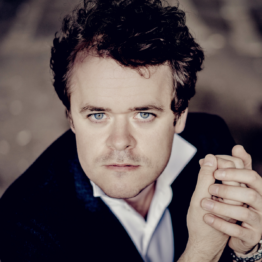

Beethoven’s Piano Concerto No. 5
May 15 – 18, 2025
Subscribe to the 24/25 season today! To learn more about subscription packages or to renew your current subscription, visit dallassymphony.org/subscribe. Single tickets will go on sale in late June. To be the first to receive season updates and special offers from the DSO, sign up for our email listing here.
JONATHON HEYWARD conducts
BENJAMIN GROSVENOR piano
BEETHOVEN Piano Concerto No. 5, “Emperor”
SHOSTAKOVICH Symphony No. 9
Benjamin Grosvenor “commands the stage with aristocratic ease.” (The New York Times) Grosvenor is the brilliant soloist for Beethoven’s final piano concerto, “Emperor.” The nickname reflects the temperament of the masterpiece, its majesty and nobility — a crowning achievement, indeed. The evening concludes with Shostakovich’s Ninth Symphony, whose number alone would terrify the average composer with its inevitable comparison to Beethoven’s Ninth. But instead of the generally expected grandiose, no-holds-barred praise for Stalin’s World War II victory, the composer’s irreverent, sardonic sense of humor delivered a mocking little number!


